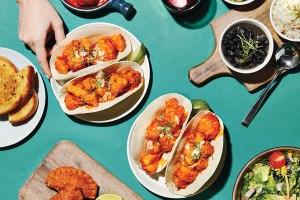The End of Chinatowns?
In this month’s issue of the Atlantic, Bonnie Tsui asks whether the rise of China spells the end of Chinatowns. According to 2010 Census data, Chinatowns in New York and San Francisco have recently begun depopulating. Whether this is mainly due to decreasing immigration from China, or high rents pushing working-class Asians out of the city and into the “ethnoburbs,” the trend seems significant. In the last 10 years, Manhattan’s Chinatown lost 9 percent of its residents—including 14 percent of its Asian ones.
What this means for food in Chinatowns is an open question, and the answers may prove to be counterintuitive. Since there’s no reason not to, consider Philadelphia as a bellwether.
One possibility is that Chinese restaurateurs will follow the flow of Chinatown residents toward the ‘burbs. Han Chiang, who opened Han Dynasty in Exton, could be considered one such. But Chiang’s second location, in Old City—hardly an “ethnoburb”—provides a variation on that theme: that as Chinatowns hollow out, restaurateurs will simply cater more to non-Chinese eaters. It seems like this sort of thing would work best for restaurateurs who simultaneously move away from Cantonese food in favor of other Chinese cuisines—like Sichuan, in Han Dynasty’s case.
Another possibility is that as Chinatowns lose their residential vitality, they will come under pressure to amp up the vitality of their service sectors, and that this will drive diversification of cuisines within Chinatown neighborhoods. Perhaps we’ve already begun to see this in Philly in the last ten years or so, with places like Yakitori Boy and Penang. Or maybe we’re on the cusp of a postmodern menu moment in Chinatown, judging by Hop Sing Laundromat’s plans to bring in the “five best things” from any number of neighboring restaurants, in lieu of doing food prep itself. Indeed, those two trends might dovetail nicely.
For the moment, Philadelphia’s Chinatown doesn’t seem to be under quite the same pressures as those in San Francisco, New York, or Washington DC—cities where downtown rents are way higher than they are here. But there are reasons to wonder what’s in store for the neighborhood beyond the Friendship Arch on Tenth Street—especially given this fall’s Food Trust Night Market in Chinatown, which was awkward in telling ways.
Among city foodies—and anyone with a nostalgia for night markets in Asia—there was a huge, pent-up enthusiasm for the event. But there was something undeniably odd about a throng showing up in such numbers … to eat (mostly) tacos, hot dogs, cupcakes, and meatball hoagies. (The sight of shop windows plastered with posters against bike lanes seemed to echo this low-level cultural disconnect.)
One of the things I’ve always liked about Philadelphia’s Chinatown is that it’s not a theme park—like, say, Washington D.C.’s. Which made it especially strange to see it halfway converted into one on that evening. Only not the sort of theme park we’ve come to expect. And maybe that’s a testament to the strength of our Chinatown–that the only way it was going to undergo Extreme Makeover: Foodie Edition was at the hands (or wheels) of food trucks serving, for the most part, completely unrelated cuisines. But it could also be a sign of ebbing vitality and influence, that the only way to lure all those hungry bodies to Tenth Street was via a lineup of food vendors in which non-Asian offerings outnumbered Asian ones by more than four-to-one.
I’m no oracle. But I would like to read other people’s takes in the Comments section.


